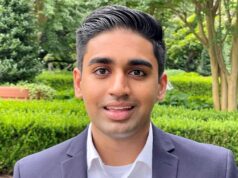
Alfredo Casasco, co-director of the Endovascular and Percutaneous Therapy Service, Hospital Nuestra Señora del Rosario, Madrid, Spain, and president of the third ESMINT congress in Nice, France, tells NeuroNews about his sense of wonder at first seeing how a microcatheter could navigate at the intracerebral level and how this opened up a world of therapeutic possibilities. He also speaks of his love of fine wines and Havana cigars, and how he does pilates to combat the effects of these two interests!
How did you come to choose medicine, and then interventional neuroradiology as a career?
Ever since I was a child, I have been attracted to medicine; first with the innocence of someone who sees a physician like an almost unattainable figure and someone to imitate, then thanks to my affinity with the biological sciences, and later due to my awareness that medicine was a weapon against disease and suffering.
In my opinion, there is nothing more comforting than seeing how a doctor can act to resolve a long period of suffering, and thus change the future of a person and/or a family.
My choice to go into interventional neuroradiology followed a natural evolution from neurosurgery, which was my first specialty, to a less invasive technique. There was also the stimulus to face a new specialty in full development, which represented a major challenge.
Which innovations in interventional neuroradiology have shaped your career?
The embolization of vascular malformations at cerebral, spinal and maxillofacial levels which has changed rapidly. Throughout my (26 years and more!) of being a specialist in neurointervention, I have seen the incredible evolution in techniques and treatment strategies for these diseases. This has allowed us to understand the haemodynamics and severity of them much better, thus allowing us to be more precise in the indications for treatment.
Who were your mentors in the field and what do you still remember from their wisdom?
I had three mentors: At the beginning of my career in Buenos Aires (1980), my chairman, professor Armando Basso (past president of the World Federation of Neurological Surgeons), was the one who told me about the development of this new specialty. He said: “There is a rapidly developing new specialty, called interventional neuroradiology, and due to how it is evolving, I think it will replace many neurosurgical procedures in the future. So I think that you, being young, might be interested in it, and then decide your future, either as a traditional neurosurgeon or as an endovascular neurosurgeon”. He was also the one who gave me the possibility of training with my second mentor, professor Jacques Theron at the University Medical Center in Caen, France, who taught me about this specialty from scratch. Prof Theron’s constant evolution, and his continuing trend towards innovation stems from his superior intelligence and these qualities in him have always held my attention. Another of his qualities is the ability to simplify techniques, which originally seemed very complicated. Obviously, this means a power of understanding and capability out of the ordinary. After seven years with Prof Theron and then two years working in Argentina along with Dr Pedro Lylyk, I could finally work in the Lariboisière Hospital in Paris, France, with the physician who became my third mentor, and in some ways the architect of my future development in both care and university levels: professor Jean Jacques Merland. From him, I learned the techniques of embolization of spinal and cerebral vascular malformations, as well as a balanced way of thinking against the disease. Most importantly, I learned humility, prudence and respect for the patient and his environment.
As a young doctor, do you remember a moment in interventional neuroradiology when you thought, “This is truly amazing”?
The fact that impressed me the most as a young neuroradiologist was seeing how a microcatheter could navigate at the intracerebral level, reaching the most unimaginable areas. This opened endless therapeutic possibilities through these microcatheters, and allowed me to imagine a future full of challenges both from the assistential point of view as well as research.
In the last 10 years of neurointervention, in your opinion, what have been the three most defining randomised controlled trials for the specialty?
Randomised studies that have had most influence in our specialty have been the ISAT from the positive point of view for endovascular treatment of intracranial aneurysms, and CAVATAS in the negative point of view, for stopping something that I think will be the undisputed future treatment of carotid stenosis that is angioplasty and stenting in the endovascular way.
Can you describe a memorable case and how interventional neuroradiology came to the rescue?
In 1992, while working at the Lariboisière Hospital, we had a call from the operating room of ENT, because they could not control a bleeding caused by a juvenile angiofibroma, which had linked the branches of both external carotid arteries, eliminating the possibility of embolization through this way. The tumour was supplied by anastomotic branches from both vertebral and both internal carotid arteries. The patient was entering into an hypovolemic shock, and at that moment we had the idea to make a direct percutaneous puncture to the tumour, identifying reflux of blood through the needle. At that time, I decided to inject contrast through the needle, and observed by fluoroscopy that the contrast circulated within the tumour, and washed out, with a proper drain through the draining tumoural veins. It was then that we decided to embolize the tumour through the needle, injecting glue and watching how the embolic substance was distributed in the tumour capillary bed, and after several injections produced devascularisation of the entire tumour. The patient was haemodynamically stabilised, and then the tumour could be completely excised. That day, the embolization technique of hypervascular tumours by direct puncture was developed.
What is the research you have done that has been most rewarding?
The development of techniques for embolization of hypervascular lesions by direct puncture (1992), and the development of techniques for retrograde catheterisation of intracerebral pial veins (1991).
What are the honours that you have received that you look back on with pride?
I cherish the memories of my nomination as associated professor at the University of Paris, and the prize of the National Academy of Medicine of France for my work about “Endovascular treatment of intracranial aneurysms.”
What are your current research interests?
I am presently dedicated to the endovascular treatment of spinal vascular malformations, and to the combined treatment (surgery-laser-embolization) of superficial vascular malformations. I am also collaborating on the development of stent diversifiers of intracerebral flow.
What do you hope to achieve in your term as president of ESMINT?
I would like to bring together a group that is as large as possible comprising interventional neuroradiologists, neurosurgeons and neurologists from all nationalities. I would like to create an open space for real debate, without social, political or idiomatic obstacles. So we are working and hoping to achieve a high level of scientific discussion in a relaxed and friendly environment which allows young people to express themselves without any complexes, and for older people to speak with wisdom and humility.
What are three key questions in interventional neuroradiology which you would like to see answered?
Which future substance and technique will be able to achieve a 100% embolization in arteriovenous malformations? Is it possible to develop anti-angiogenic factors to reduce or heal vascular malformations? How long would it take for stroke units to be able to treat ischaemic stroke within the first four hours routinely?
What are the new techniques/technologies that you are watching closely?
The use of stent diversifiers of flow in the treatment of intracranial giant aneurysms, techniques for the treatment of acute ischaemia intra-arterially and embolization techniques of spinal vascular malformations.
What are your interests outside of medicine?
I am passionate about classical music and Italian opera; an “amateur” of fine wines of the world and Havana cigars. Finally, to compensate for these two last defects, I do pilates and fitness four times a week.
Fact File
Education
- Graduate of the University of Buenos Aires, Argentina
- License of Medicine and Surgery from the University of Buenos Aires
- Specialisation in Neurosurgery for neuro-ophthalmologic (1982), Hospital Santa Lucia, Buenos Aires, Argentina and University of Caen, France
- Specialisation in Radiology and Neuroradiology from University of Paris, France (1986)
Current appointments
- Co-director of the Endovascular and Percutaneous Therapy Service, Hospital Nuestra Señora del Rosario, Madrid, Spain
- Consulting professor for various University Hospitals in Europe and Latin America
Previous appointments
- Section chief of Vascular and Interventional Neuroradiology Department at Lariboisière Hospital, Paris
- Chief of Interventional Neuroradiology Service Hospitalier Pitie-Group Salpetriere, Parisentional Neuroradiology of Argentina Diseases Foundation for Children (FLENI)
Society positions
- President of the third ESMINT Congress









